
This story began in 2005 when I bought this on eBay:
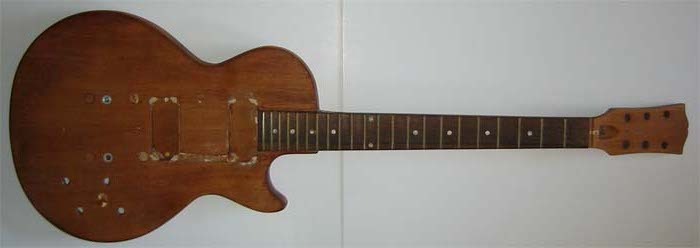

The seller claimed it was a 1956 Les Paul Junior that once looked like this:
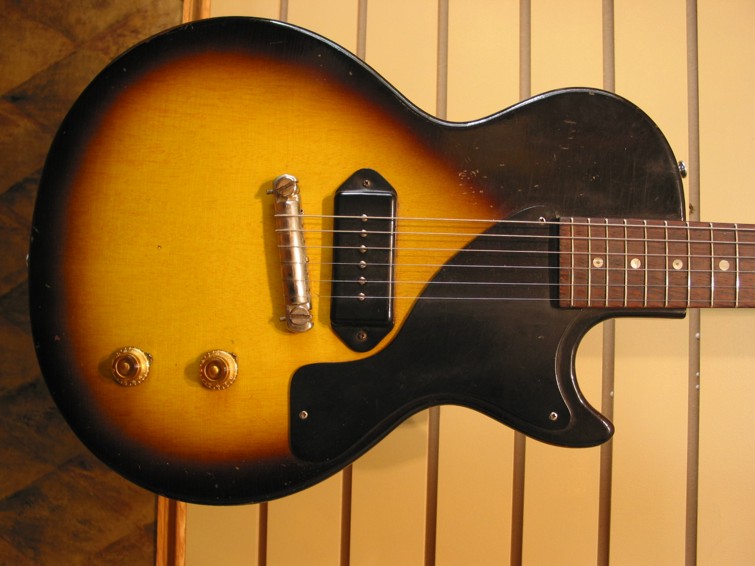
Unfortunately, he was never able to tell me the serial number (that’s my big regret about the transaction, but the price was fair enough as the guitar was a real wreck).
Did you notice how deep torture this guitar went into? The seller and/or the previous owner(s) added a second pickup and drew holes almost everywhere…
What should I do with this wrecked LP body?
I had two options:
1- Make it look like a ’50s Junior again
2- Change it to some guitar I’d like to own and play with
I bet most of you would have chosen option #1… and they will grind because I chose option #2…
BUT, I had absolutely no proof the guitar body was what the seller pretended it was: no papers, no original hardware, not even a case and the painted serial number was gone with the sanding someone did a long time ago…
I showed it to Grégoire from DNG, a very famous French luthier who told me it was a genuine Gibson Les Paul, a pretty old one. He confirmed its making around 1956-1958 but he was not able to tell me more.
This body had virtually no value because nobody can prove what original guitar it actually was, except for the mahogany wood which was of very good quality and so old that its dryness was of some value in itself. In his opinion, it was really worth working on it, whatever I decided to go for.
I am not even sure this was a Junior because you can see on the pictures that the P90 with dog ears was in the neck position, which is… strange.
Which cavity was there first? The neck or the bridge one? It didn’t really matter anyway as the original guitar was not supposed to have a single pickup cavity…
I had to make a decision. It was pretty easy because I didn’t have much money at the time and my dream was to own a 2 humbuckers Gibson Les Paul. I couldn’t afford a new one (even a second hand).
So, I decided to “customize” it the way I wanted.
First, I wanted a mother of pearl Gibson logo and a cool inlay on the headstock. I found an ‘RD Artist’ veneer on eBay (it has nothing to do with a LP but it looks cool, doesn’t it?), made some wood addition to the headstock, drew some holes, etc, and you can see the result here:
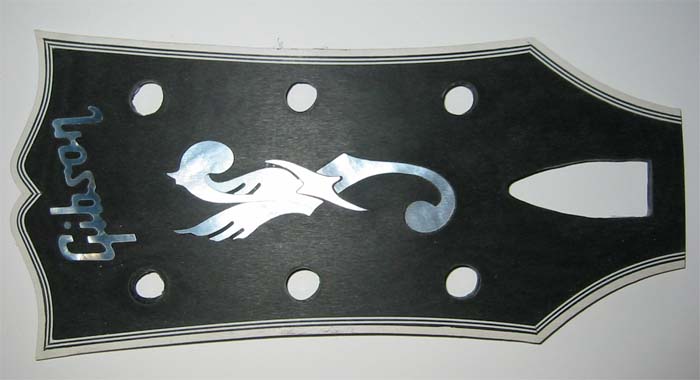
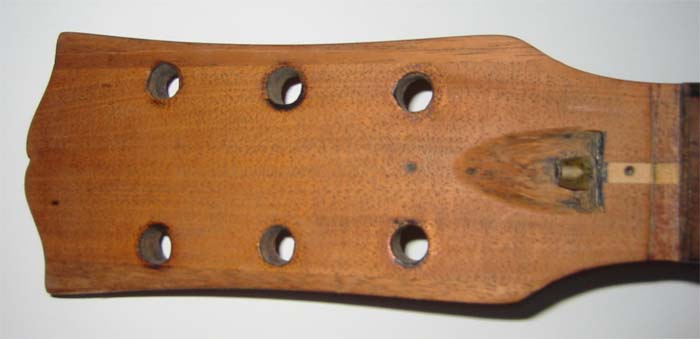
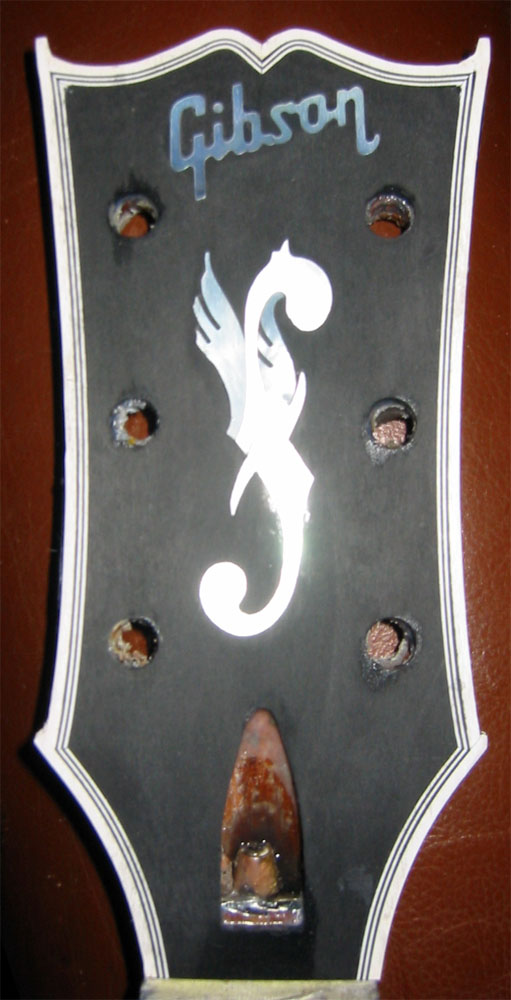
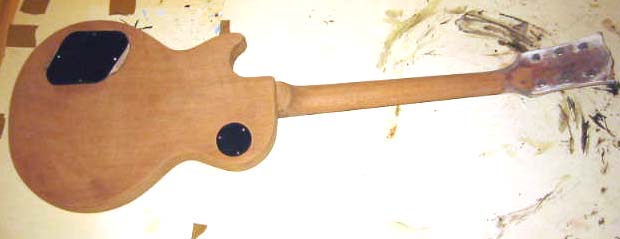

The next steps were a bit more difficult. The body was so spoiled that even with a black finish, it was still possible to see the crap under.

So I decided to head to the same luthier in 2008 and he suggested me to have a thin maple top and I let the guitar in his hands for some months.
Here are some pictures of his work:

You may notice the frets were replaced in an horrible way by the previous owner (who confessed this one).
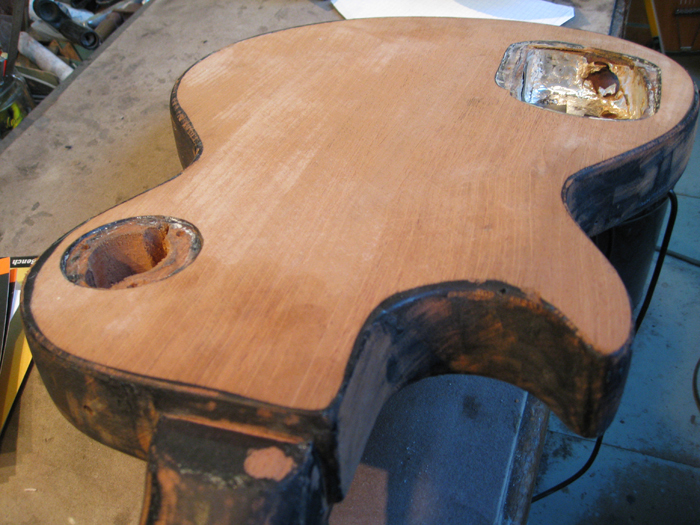
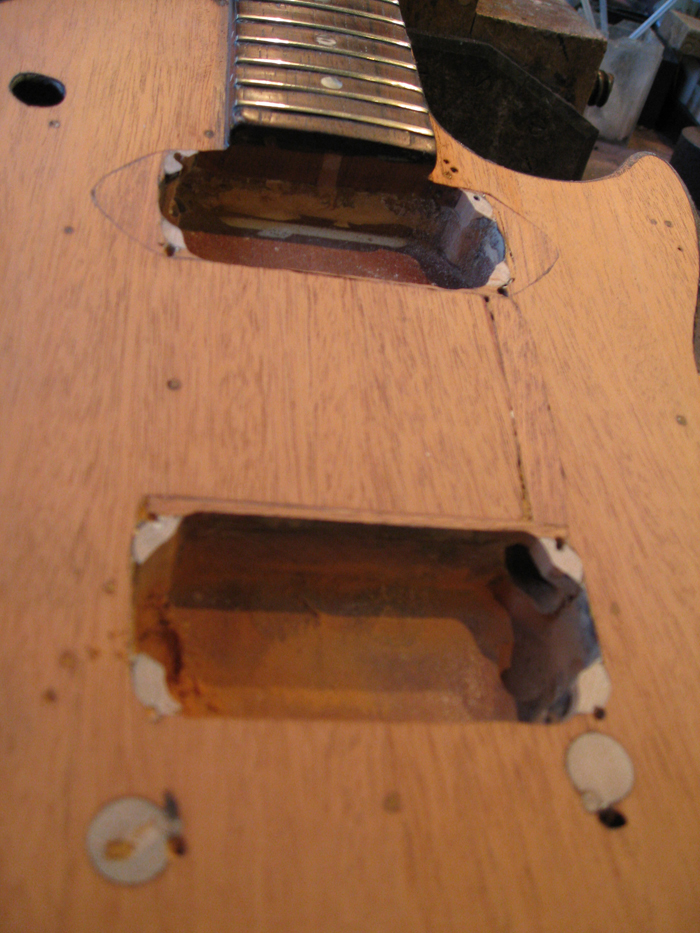
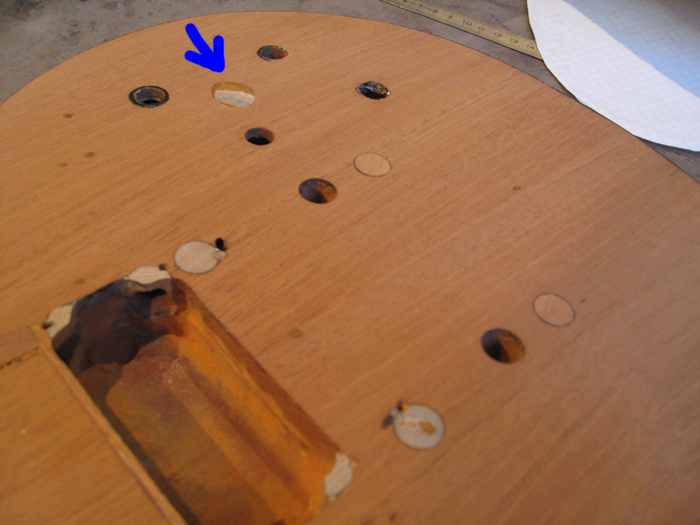
The blue arrow points to a sort of plastic that one of the previous owners used to fill one of his mistake.
You can also notice the wrong positioned stop bar holes, etc…
The top maple veneer:
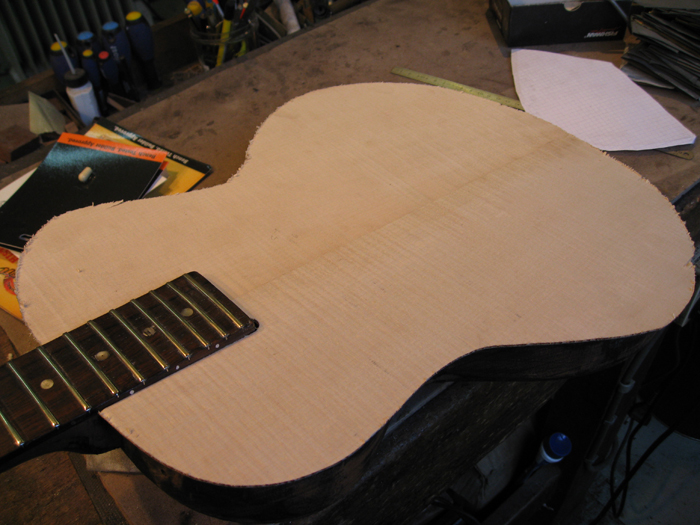
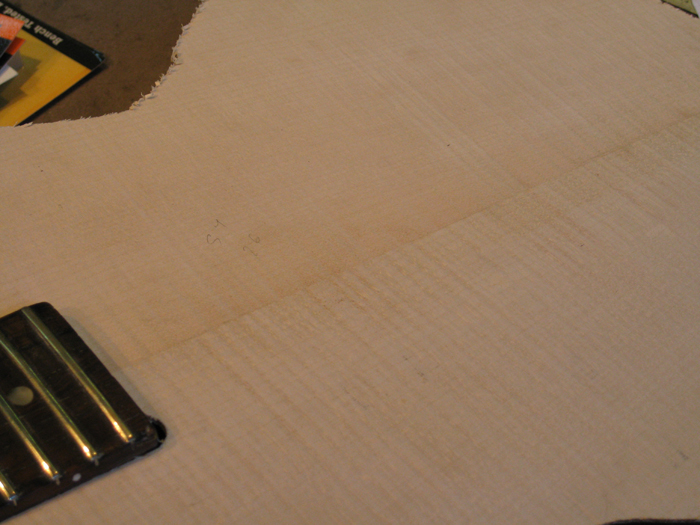
Because the stuff I did to change the head size (from a LP Junior to a RD artist) was a mess, the luthier veneered the back of the headstock with mahogany. His job is amazing!
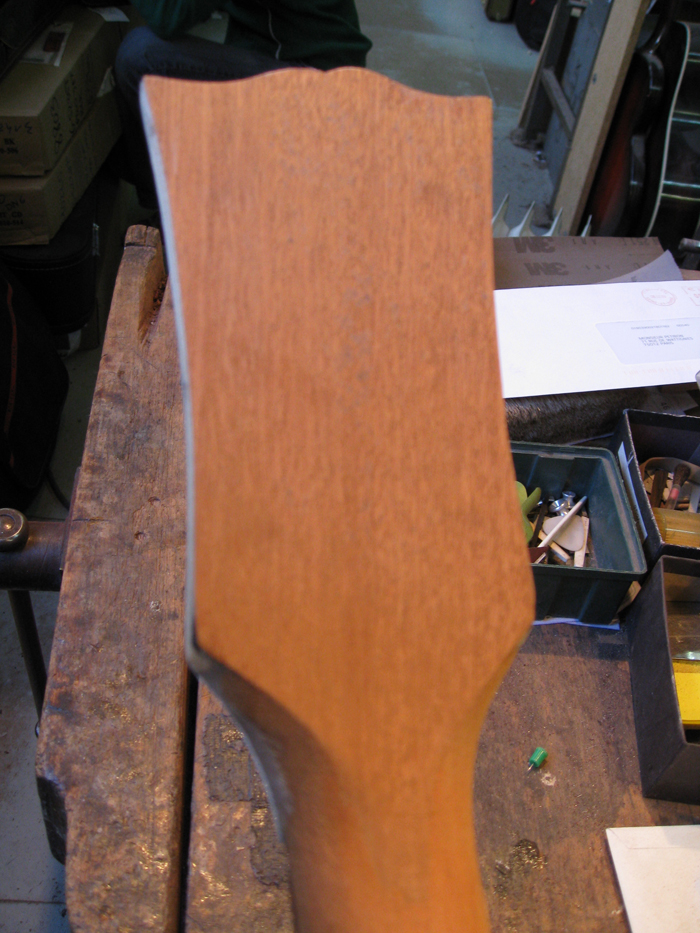
The guitar before finish:
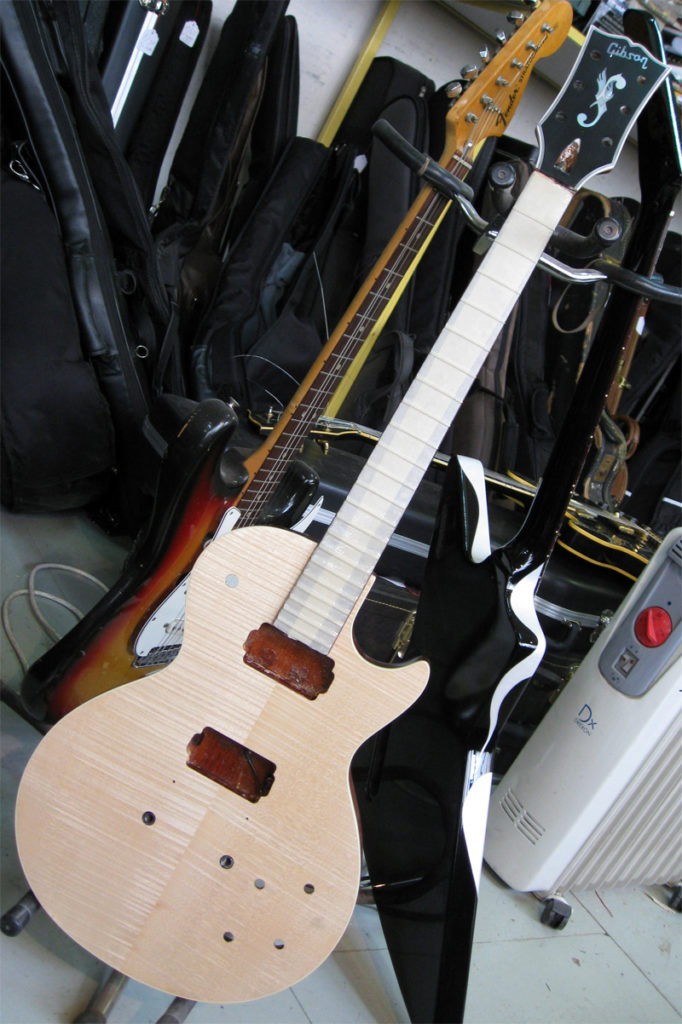
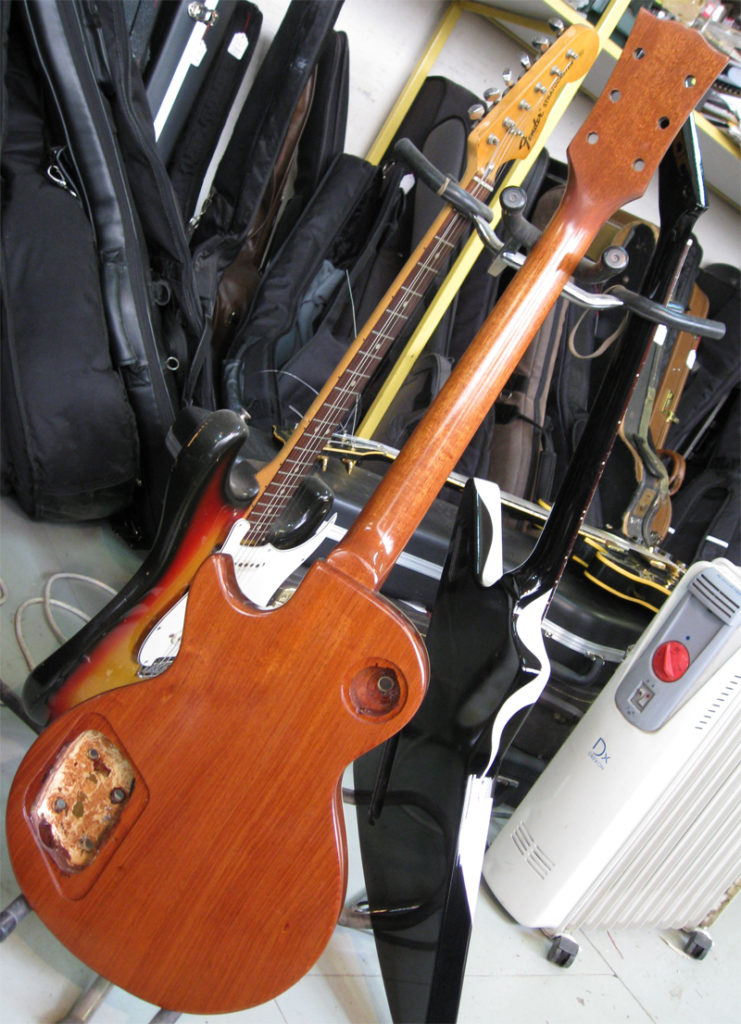
The cavity was so ugly after a previous owner destroyed it that Grégoire decided to enlarge the routing to cover it with a larger plate.

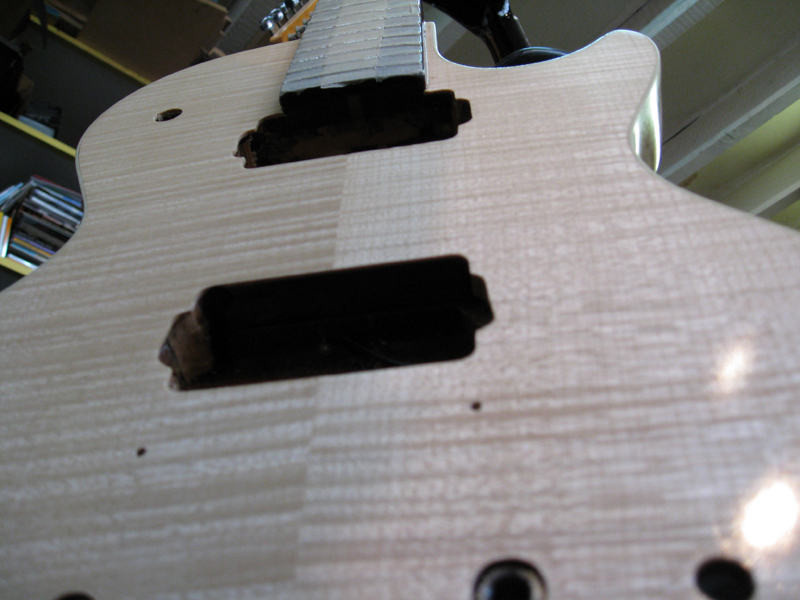
So here is my very very special LP now:



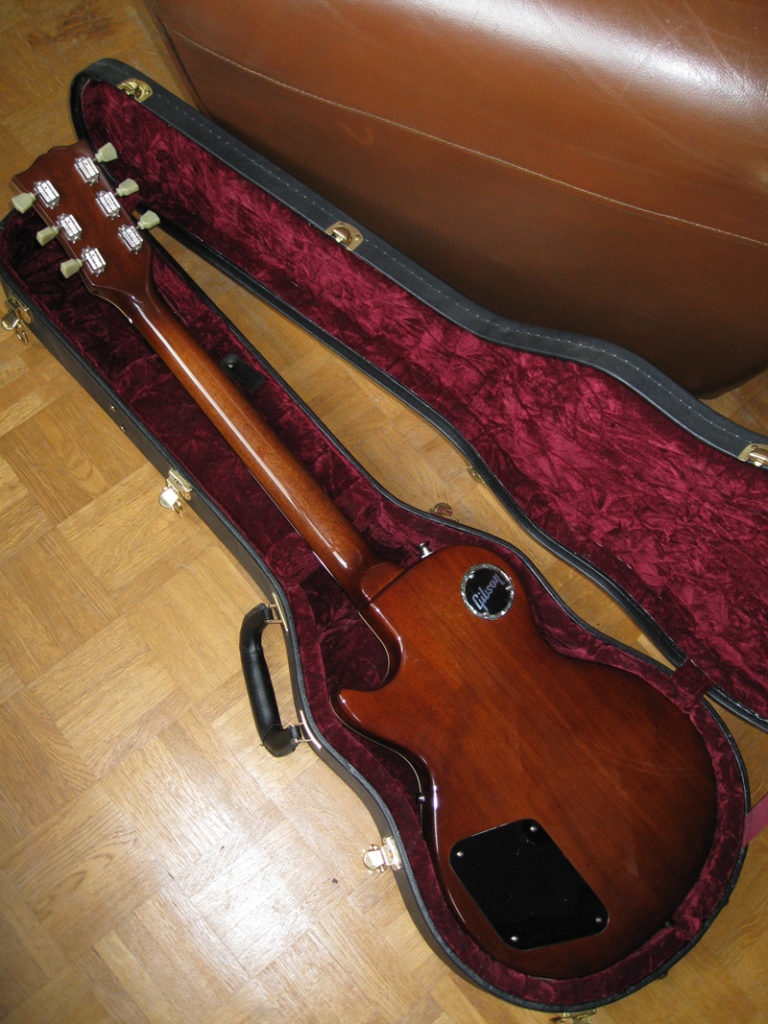

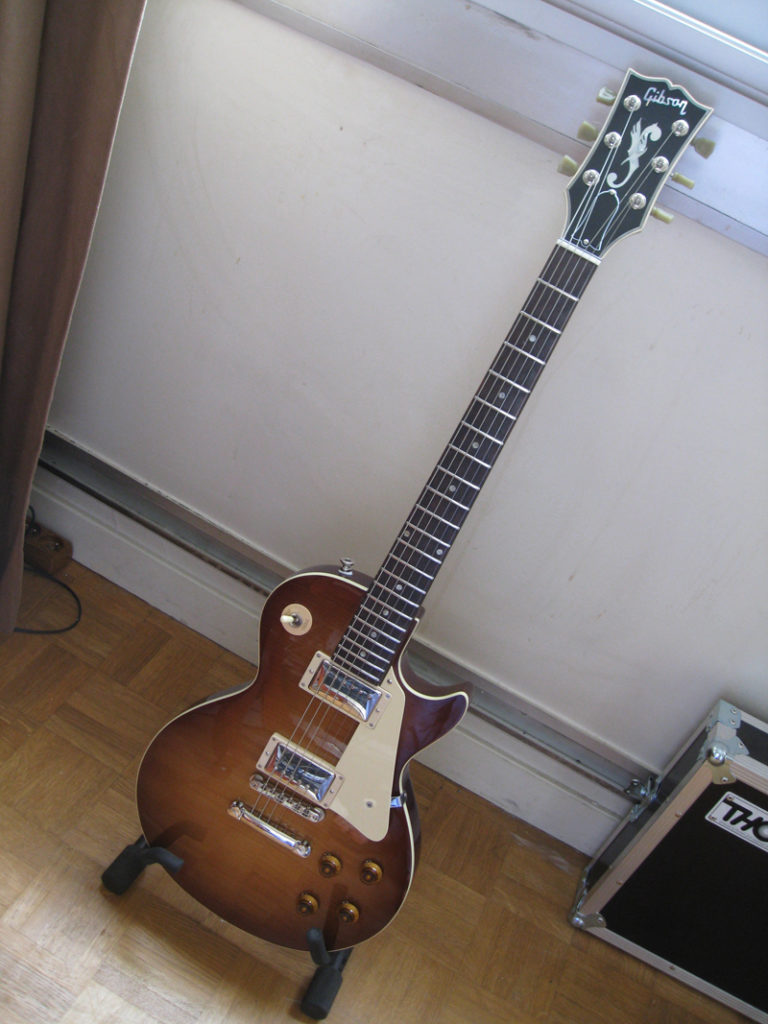


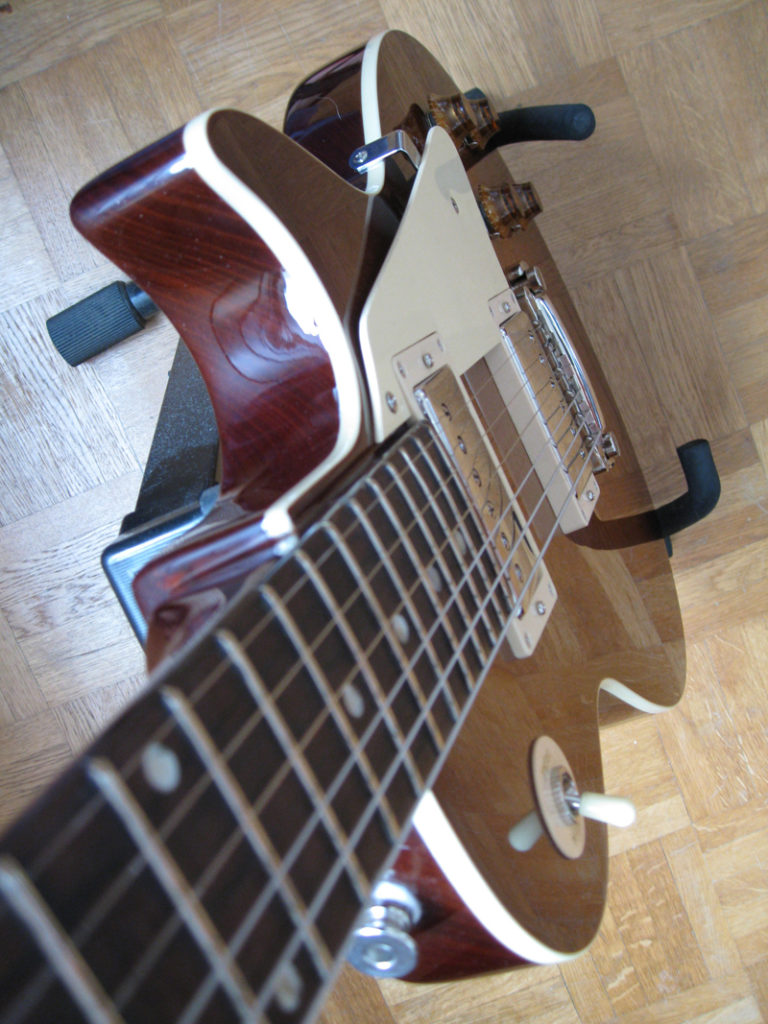

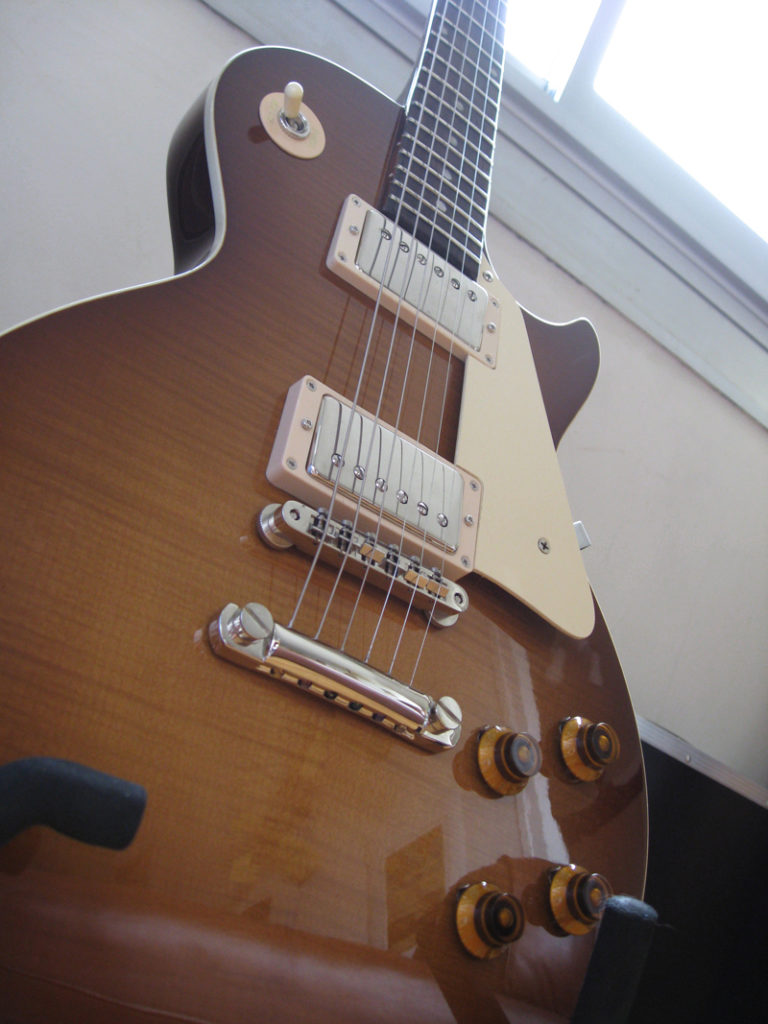

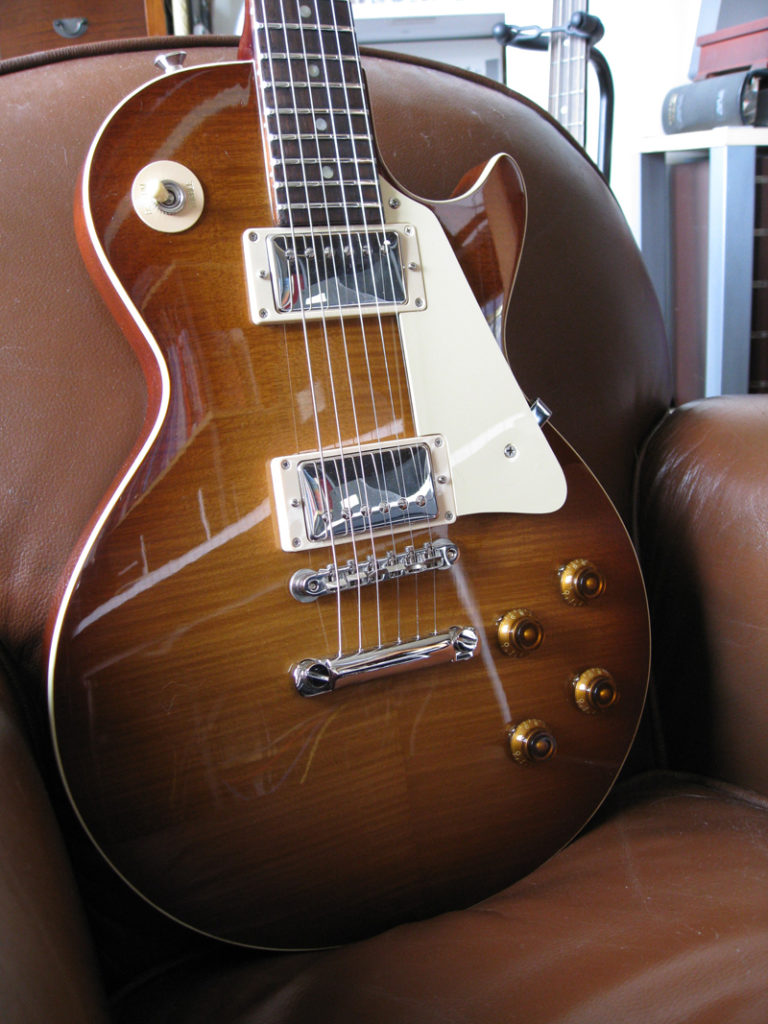
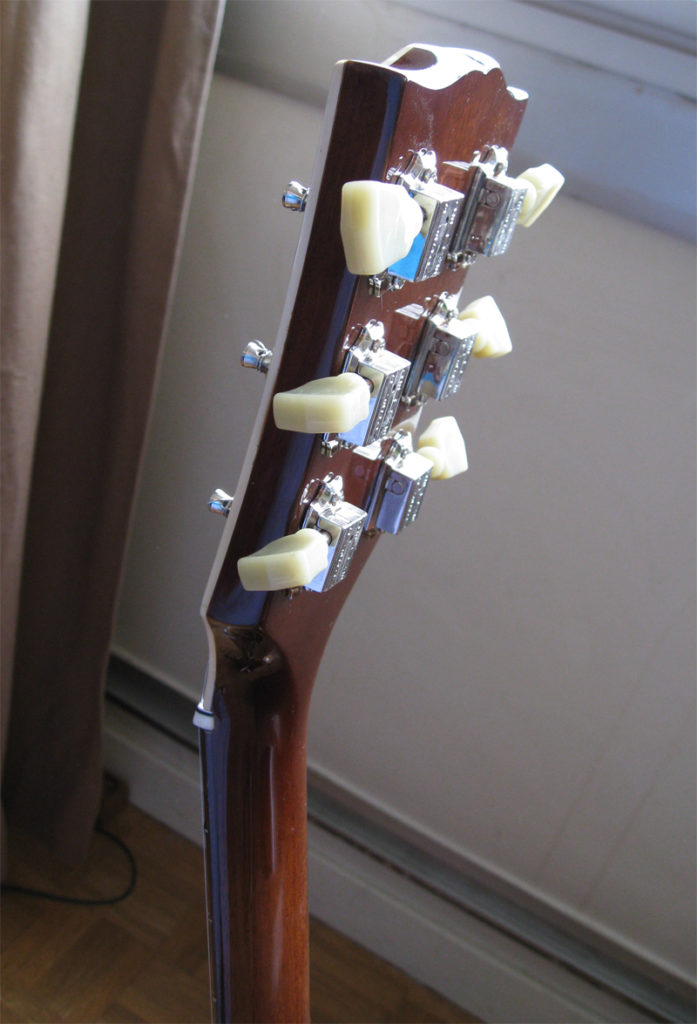
It may not be a certified 1956 or 1958 Gibson Les Paul, but to me this guitar is a wonder. She is (one of) my favorite. Because of the ‘Pegasus’ inlay I named her ‘Cloudbreaker’. She’s like a phoenix reborn with a different look. And what a powerful sound with two Seymour Duncan Original PAF ’59!
And again, may purists forgive me for not having make it look the way it was in the 50s…
Anyway, I love this guitar!

